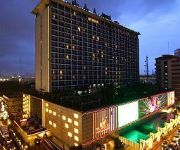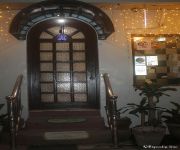Facts and Data
Webpages:
Official Unesco Page
View photos from OUR PLACE the World Heritage collection
Basis Data:
Unesco World heritage since: 1993
Size of heritage:
Coordinates:
Longitude: 120,970°
Latitude: 14,590°
Summary
These four churches, the first of which was built by the Spanish in the late 16th century, are located in Manila, Santa Maria, Paoay and Miag-ao. Their unique architectural style is a reinterpretation of European Baroque by Chinese and Philippine craftsmen.
Location on Map
Show bigger map on Openstreetmap
Baroque Churches of the Philippines
The Baroque Churches of the Philippines is a UNESCO World Heritage site located in the Philippines. This collection of four churches showcases the unique architectural style of the Spanish colonial period in the country, known as the Baroque style. The churches included in this heritage site are the San Agustin Church in Manila, the Paoay Church in Ilocos Norte, the Santa Maria Church in Ilocos Sur, and the Miagao Church in Iloilo.
History
The Baroque Churches of the Philippines were built during the Spanish colonial period, which lasted from the 16th to the 19th century. The Spanish colonizers brought with them their architectural styles, including the Baroque style, which was popular in Europe during that time. The churches were constructed as centers of religious and cultural life in the newly colonized territories.
The San Agustin Church in Manila, the oldest of the four churches, was built in 1589. It has survived numerous natural disasters and wars, making it a testament to the resilience of the Filipino people. The Paoay Church, also known as the Church of San Agustin, was built in 1694 and is famous for its massive buttresses that support the structure against earthquakes. The Santa Maria Church, built in 1765, is perched on top of a hill and offers breathtaking views of the surrounding landscape. The Miagao Church, completed in 1797, is known for its intricate facade, which features a mix of Christian and indigenous motifs.
Current State
The Baroque Churches of the Philippines are not only important historical and cultural landmarks but also active places of worship. These churches continue to serve as centers of religious activities for the local communities. They are also popular tourist destinations, attracting visitors from around the world who are interested in exploring the rich history and architectural beauty of the Philippines.
However, the churches face various challenges in preserving their heritage. The tropical climate, earthquakes, and natural disasters pose threats to the structural integrity of these centuries-old buildings. Efforts have been made to restore and maintain the churches, but ongoing conservation work is necessary to ensure their long-term preservation.
Despite these challenges, the Baroque Churches of the Philippines remain significant cultural and historical landmarks. They are a testament to the country's colonial past and the fusion of Spanish and indigenous influences in its architecture. The churches also serve as a reminder of the enduring faith and resilience of the Filipino people.
Visiting the Baroque Churches of the Philippines offers a unique opportunity to appreciate the country's rich cultural heritage. The intricate details, grand facades, and serene interiors of these churches provide a glimpse into the past and a deeper understanding of the Philippines' colonial history. As UNESCO World Heritage sites, these churches are not only important to the Philippines but also to the global community, representing the shared cultural heritage of humanity.
Hotels and places to stay
Manila Pavilion Hotel & Casino
RAMADA MANILA CENTRAL
Dela Chambre Hotel
ZEN Premium Binondo Manila
Best Western Hotel La Corona Manila
City Garden Suites Manila
Miramar Hotel
Hotel Paradis
Hotel Juliano
GREAT HUTS RESORT
Videos from the area
Videos provided by Youtube are under the copyright of their owners.

















